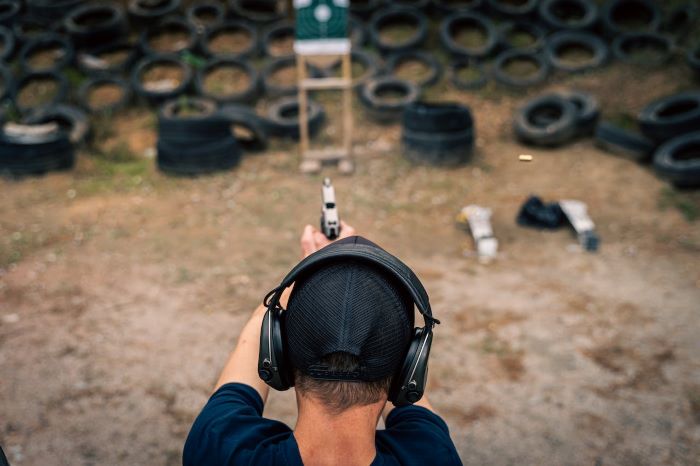When it comes to carrying a firearm, selecting the right gun holster is as crucial as choosing the firearm itself. A holster not only ensures the safety of the gun owner but also contributes to the accessibility and protection of the firearm. With a myriad of options available in the market, it can be overwhelming to choose the perfect holster. Here we will discuss about the essential factors to consider when purchasing a gun holster, ensuring a choice that is both practical and comfortable.
1. Type of Holster
The first factor to consider is the type of holster that suits your needs. Holsters come in various styles, including inside-the-waistband (IWB), outside-the-waistband (OWB), shoulder holsters, ankle holsters, and pocket holsters. Each type has its advantages and scenarios where it excels. For instance, IWB holsters are great for concealed carry, while OWB holsters are preferred for open carry or range use. Your choice should align with your primary use, be it concealed carry, home defense, or tactical training.
2. Material
The material of the holster is paramount for durability and comfort. Leather holsters, known for their classic look and durability, mold to the shape of the gun and wearer over time. Synthetic materials like Kydex are lightweight, waterproof, and maintain their shape, offering a consistent draw. Nylon holsters are a budget-friendly option, though they may lack the structural integrity of leather or Kydex. Consider the climate you live in and the level of activity you engage in when choosing the material.
3. Retention
Retention refers to how securely the holster holds the firearm. A good holster should have adequate retention to prevent the gun from falling out or being taken by someone else, but not so much that it impedes a smooth draw. Some holsters come with adjustable retention screws, while others have retention straps or thumb breaks. For those in law enforcement or open carry situations, level II or III retention holsters might be necessary.
4. Comfort and Fit
Comfort is crucial, especially if you plan to wear the holster for extended periods. The holster should fit snugly against your body without causing discomfort. The fit of the holster to the gun is equally important. It should be designed for your specific firearm model to ensure a secure fit without being too tight or too loose.
5. Concealment
For concealed carry users, the holster must effectively conceal the firearm without printing (the outline of the gun being visible through clothing). This depends on the holster design, the size of the gun, and your attire. Slim-profile IWB holsters like those from Alien Holsters are typically better for concealment.
6. Accessibility
A holster should allow for quick and easy access to your firearm. The positioning of the holster on your body, the retention level, and the design all affect how quickly you can draw your weapon. Practice drawing from your holster to ensure you can do so efficiently and safely.
7. Price and Quality
While price is a consideration, it should not be the only factor. A cheap holster might save money initially but could compromise on quality and safety. Invest in a holster that offers a balance of quality, functionality, and affordability.
Conclusion:
Choosing the right gun holster involves a careful consideration of type, material, retention, comfort, concealment, accessibility, and price. Remember, the best holster is the one that fits your specific needs and lifestyle while ensuring the safety and accessibility of your firearm. Take the time to research, try different options, and make an informed decision for a responsible and comfortable carrying experience.

